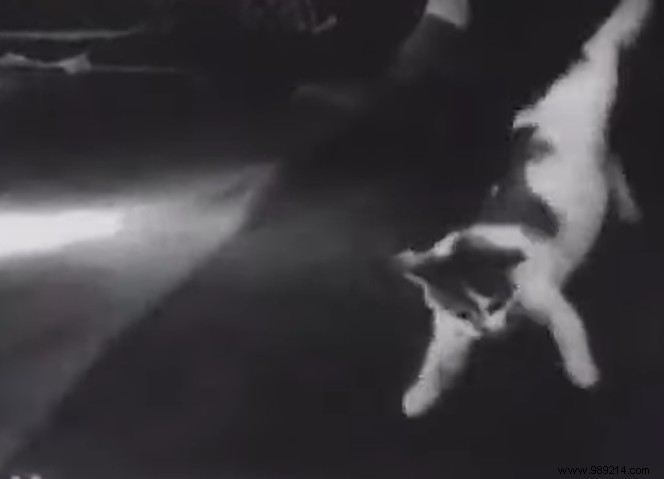Endowed with a rare plasticity, cats helped change the behavior of astronauts in space. The understanding of the movement of cats has notably allowed an evolution with regard to movements in weightlessness.
It's no news, cats have the exceptional ability to correct their body posture during a fall. As an article published by Popular Mechanics on August 24, 2020 recalls, space research has used cats to understand how to move better in weightlessness. Examples include enhancements to extravehicular activity, requiring an exit from the space vehicle. This is one of the most dangerous phases for astronauts.
According to a NASA document, scientists had placed cats in devices intended for training astronauts. The goal? Observing the reaction of these animals within the framework of a particular discipline:bioastronautics.

The first to send cats into space were the French in 1963, as part of survival rocket tests. One of the cats named Felicette even survived one of the tests and was recovered with the rocket's projection capsule. However, the first tests on cats began in the late 1940s. The US Air Force indeed analyzed the behavior of cats during "zero G" flights (zero gravity) aboard a Convair C-13 recreating the conditions of weightlessness (see video at the end of the article).
In 1969, researchers from Stanford University (USA) published a study in the International Journal of Solids and Structures. Partly funded by NASA, this research attempted to provide a dynamic explanation of the falling phenomenon cats. The researchers replicated the animal using a pair of joined cylinders that flex and bend together. From the tests, the study directors developed differential equations describing the phenomenon. Thus, the results allowed NASA to develop maneuvers that can help astronauts effectively orient their bodies in weightlessness.
More recently in 2012, engineer Destin Sandlin explained his theory of cat movement based on old NASA images. The person reproduced the experiment and concluded that cats use the gyroscope effect using their inner ear . This allows them to perfectly twist their bodies in order to land on their feet during a fall.